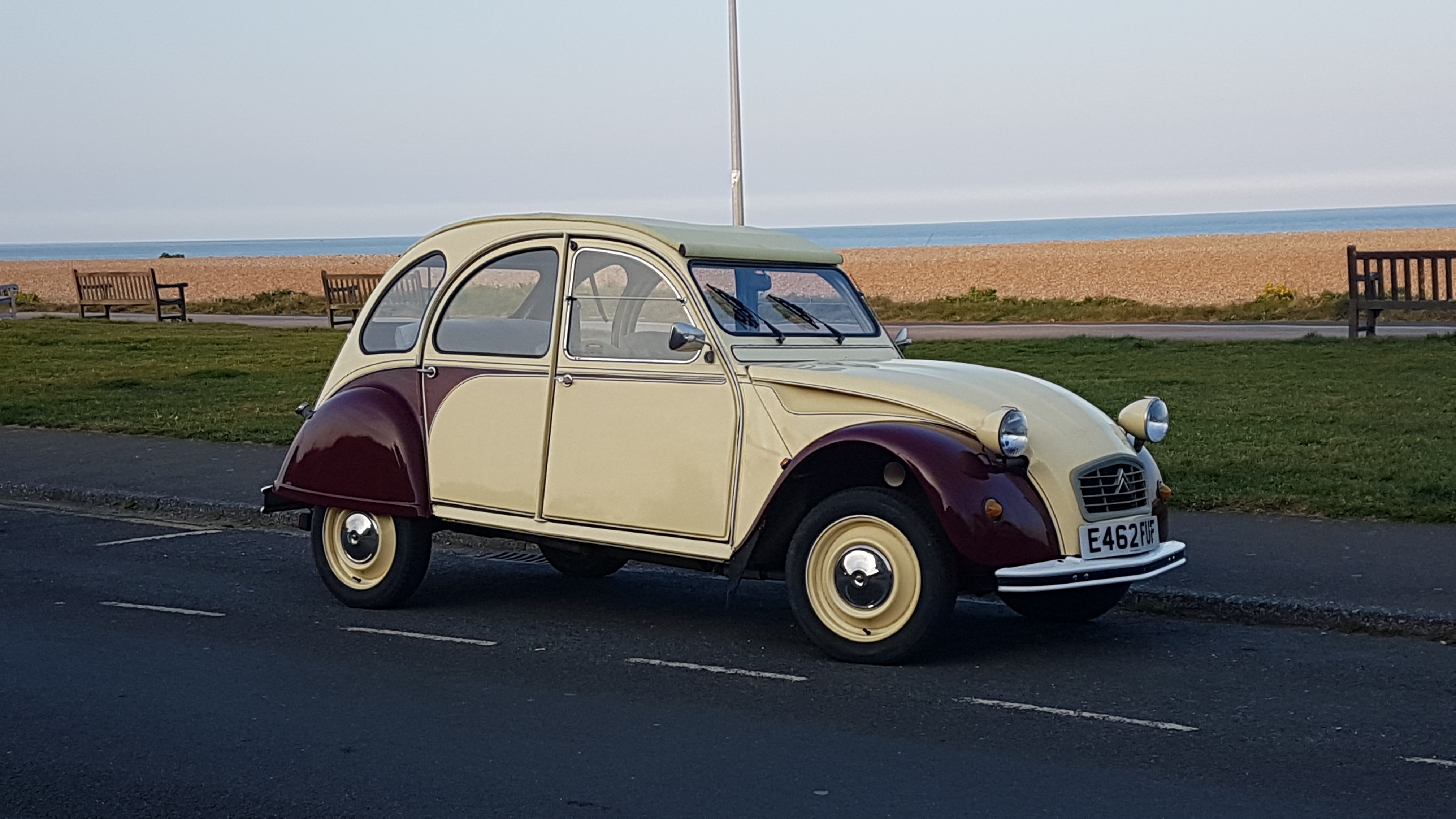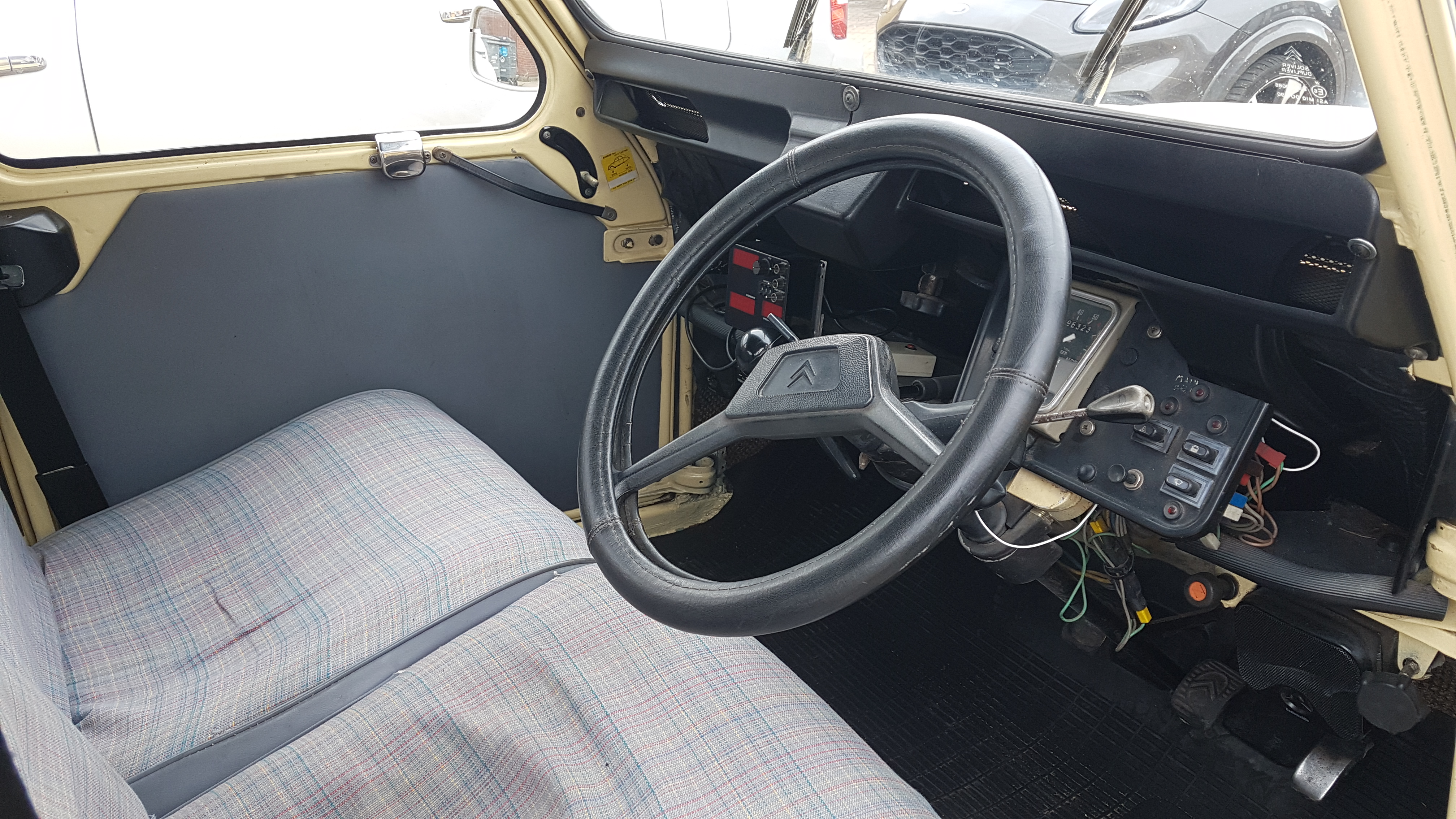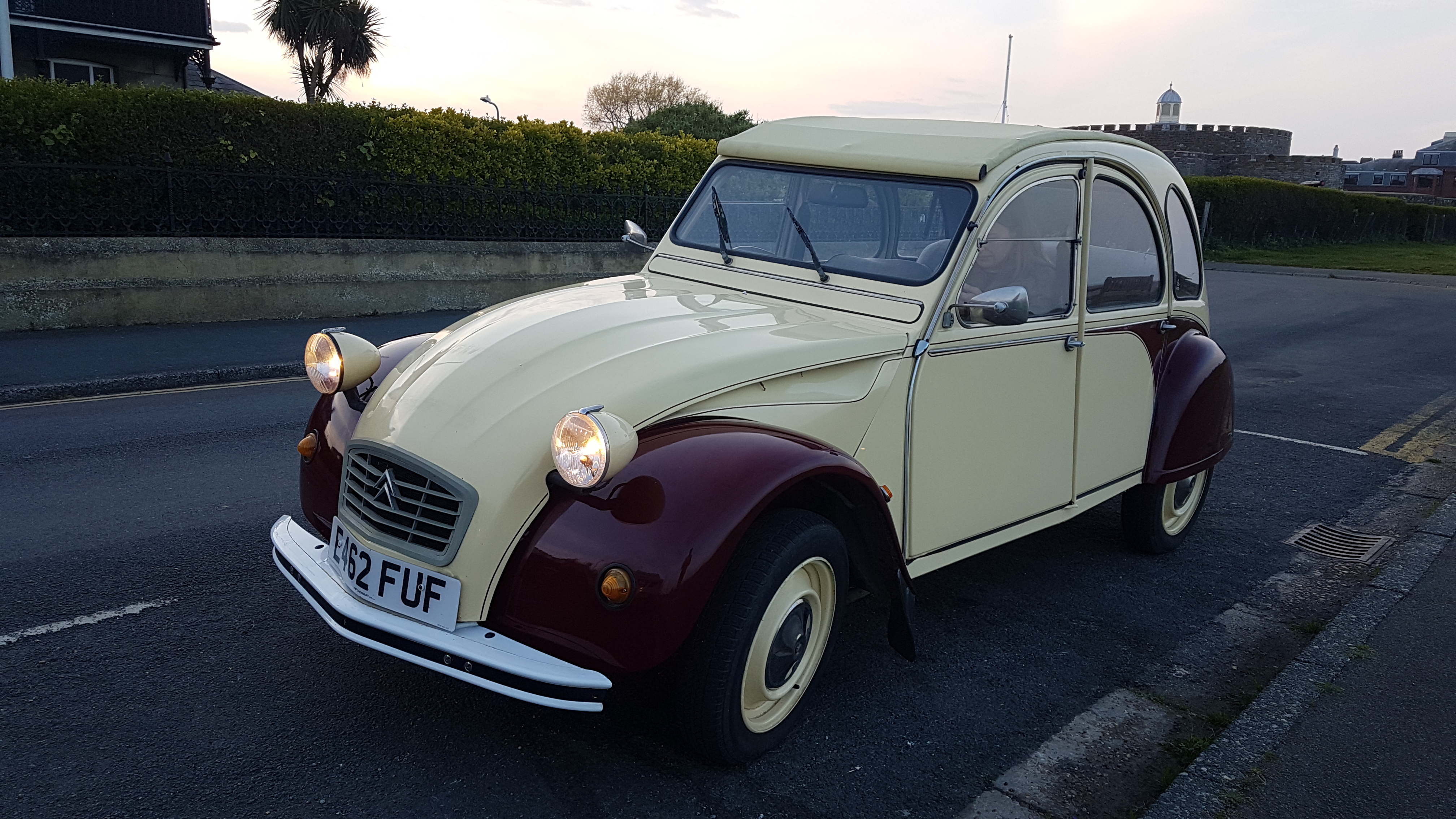FJ Drives: The Citroen 2CV
All Citroën 2CVs are considered classic cars today - this should come as no surprise for a car that was originally first tested before World War II and finally put into production for 42 years from 1948.
The name 2CV is pronounced ‘deux cheveaux’ in French, meaning ‘two horses’, so it was never going to win any drag races, even when it was still a glint in the eye of Citroën Vice President Pierre Boulanger. His vision was instead to motorise the large number of French farmers still using horse and carts in the 1930s. Designed to be simple and economical from the beginning, the 2CV was purpose built to handle poor quality post-war French roads.

Often nicknamed the ‘umbrella on wheels’, thanks to its fixed profile convertible bodywork, the 2CV featured a full-width canvas roll-back sunroof that could also accommodate oversized loads, as seen on the opening credits of the Antiques Roadshow. The rear bench and front passenger seats can also be removed with just a couple of clips, which also makes it easy to turn your 2CV into a van, if you so desire... In later years these features were marketed as a ‘convertible roof’ and ‘removable picnic chairs, but the origins were far more agricultural. Original ‘ripple bonnet’ models feature an extended version of the canvas roof which almost reaches the rear bumper, but this was originally designed as a cost saving exercise, rather than a convenience feature.
In 2023, 2CVs are no longer the bargain they once were, with prices now regularly reaching five figures. But what if you really want to drive a 2CV but can’t afford to buy one today? We have the answer – hire one.

A sunny spring morning seemed like the perfect opportunity for our first taste of the 2CV. Rolling back the canvas roof, we turned the key to bring the 29bhp, 602cc air-cooled engine to life – immediately recognising the characterful clatter of the engine. Designed to run for 50,000km at full throttle, all 2CV engines are hugely under stressed, and were manufactured so that the engine’s block and crank need never be disassembled. The engine’s oil cooler is also set behind a crank-driven fan, meaning the 2CV does without a fan belt, thermostat, radiator or water pump – that’s less to go wrong, then.
The first job was to understand the unusual four-speed H-pattern dogleg gearshift pattern, which is something we initially struggled with, an experience we share with almost every new 2CV driver, apparently. It pays to pay attention here… setting off in third can make standing starts a little uncomfortable.

Thankfully, not only had we picked the right time of year to experience the best that 2CV motoring can bring, but we were also in a great part of the country too - with plans to visit almost every seaside town in Kent from Herne Bay to Dover.
We didn’t expect to receive so many thumbs up, cheers and smiles from bystanders as we did, perhaps also helped by that particular 2CV’s standout colour scheme. That’s a huge part of the fun of driving around in an iconic classic car: it makes others happy too.
A word of warning, though - make sure you warn your passengers of the extreme body roll which all 2CVs have, as one of our passengers thought that the car was about to roll over at low speeds when driving around a mini roundabout. This is just one of the many reasons why the 2CV is such a unique experience, and something completely removed from a modern car.
Because 2CVs are feather-light, our example kept up well with modern traffic and even achieved a 70mph cruising speed, although steeper hills can present a challenge. Despite the existence of the well-established Classic 2CV Racing Club, any enthusiasts expecting a performance vehicle will be a little disappointed with the standard production model.
Having said that, the 2CV does handle corners incredibly well. Early examples debuted the first ever radial tyres fitted to a production car, with suspension designed to work in harmony with the Michelin X tyres. When driving a classic with limited performance, it’s all about carrying momentum. Herein lies the 2CVs forte – you’ll often find you don’t need to lift your foot from the accelerator while cornering, developing a new driving style that wouldn’t work with more powerful machinery.

After reaching Dover, our experience in Citroën’s icon was drawing to a close and we began to reflect on a truly memorable day behind the wheel. The 2CV is a classic that offers an unmatched experience, with driving pleasure available in spades without the need to endanger your licence.
Would we recommend one? Oui, s'il te plait!
We want to hear from seasoned 2CV enthusiasts… Tell us about your tin snail adventures in the comments below!

COMMENT